- Simplified, cost-efficient & reliable solubility measurement
- Maximize time savings
- Avoid repetitive and labor-intensive work
- Sustainable use of compounds & chemicals
- Straightforward analysis
EASY Screener
For faster, better and effective drug development!
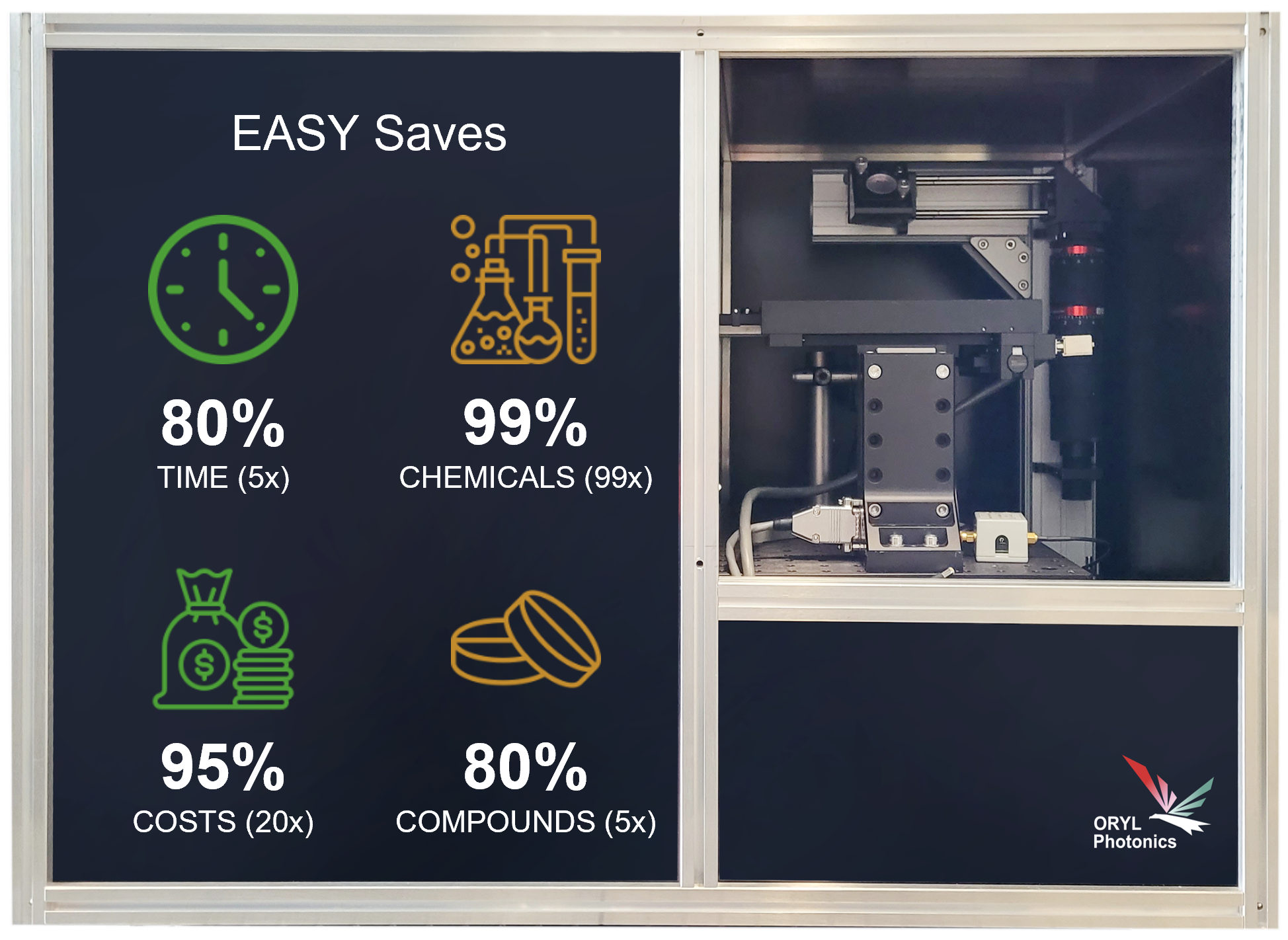
As simple as nephelometry and as reliable as LC-MS
How does it work?
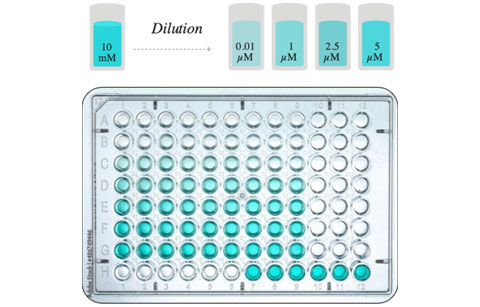
DILUTE
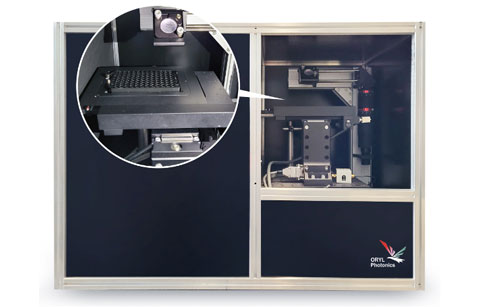
MEASURE
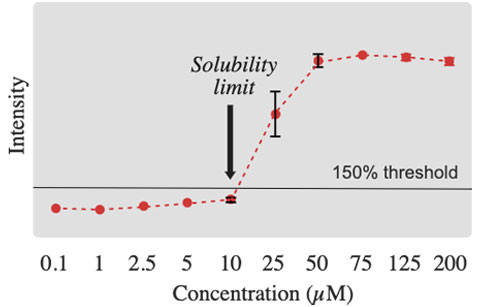
ANALYZE
Simplifying Solubility Measurement
State-of-the-art (LC-MS)

ORYL process

By removing the problematic steps, Easy saves
UN Sustainable Development Goals

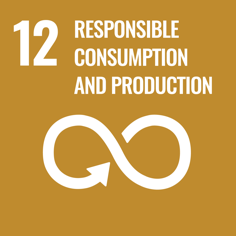
Calibration using mixtures of heavy (D2O) and light (H2O) water
H2O Content (%)
| H2O content (%) | Std/Mean (%) |
|---|---|
| 11.25 | 0.8% |
| 33.75 | 0.7% |
| 56.25 | 1.6% |
| 78.75 | 2.5% |
| 100 % | 2.3% |
Direct measurement of aggregation for solubility
What is the technology behind the EASY Screener?
The EASY Screener is a light-scattering device that is different from the conventional linear scattering or the popular dynamic light scattering. The EASY Screener is based on the physics of nonlinear light scattering where an ultrafast laser that generates very high peak intensities is used to excite the sample. In particular, the device is extremely sensitive to how substances (proteins, compounds, macromolecules) aggregate at the pre-aggregation level and is a direct measurement of aggregation with molecular level information. As proof of sensitivity we calibrate the device with mixtures of D2O (heavy water) and H2O (light water). The device is able to differentiate <2% change in D2O content. With this precision, detecting aggregation of small compounds is straightforward.
Sensitive to changes in molecular structure
Differentiates ~2% change of D2O
Designed to measure solubility
Easily handles small compounds (<1 nm) and beyond
Excellent repeatability & reproducibility
Relative error (std/mean) < 5%
EASY is designed to measure the solubility limit
Comparison with nephelometry
We tested several compounds (in duplicate) that are poorly soluble (<50 µM solublity limit) and performed a direct comparison with nephelometry with the same experimental conditions. As a metric, we use the relative error (std/mean) to determine the reproducibility of the measurements.
Summary of results
The table below shows the measured solubility limit for the compounds tested comparing the EASY Screener and nephelometry:
| Compound | EASY (µM) | Nephelometry (µM) |
|---|---|---|
| Compound 1 | >5 | 51 |
| Compound 2 | >25 | 90 |
| Compound 3 | >10 | 27 |
| Compound 4 | >2.5 | 27 |
Key Highlights
- EASY Screener detects solubility limit at lower concentration than nephelometry
- The EASY Screener produces precise and reproducible measurements at low concentrations (std/mean < 5%)
- Nephelometry is not suitable to obtain reproducible measurements at low concentrations (std/mean is large)
- EASY is extremely useful for investigating dynamics at the pre-aggregation level.
EASY – Compound 1
Concentration (µM)
Y-axis is normalized to the average intensity of the first two concentrations: 0.1 and 1 µM concentration which defines the baseline. The blue/black plots are duplicate measurements, orange is reference (soluble) compound.
EASY with precise and reproducible measurements
| Concentration (µM) | Std/Mean (%) |
|---|---|
| 0.1 | 2.84 |
| 1 | 2.77 |
| 2.5 | 3.05 |
| 5 | 3.86 |
| 10 | 23.9 |
| 25 | 2.7 (saturated) |
The solubility limit is visible as a jump in the normalized intensity (normalized to the average of the first two datapoints). The two plots (black, blue) are duplicate measurements of known compound that is insoluble. As reference, the response of a known compound that is soluble (orange plot) is shown. The response of the soluble compound is flat, indicating that the there are no aggregates (i.e., exists in monomer form) in the range of concentrationd tested. The solubility limit is defined as the concentration just before the normalized intensity is above 150% of the baseline, here, the solubility limit is detected at 5 µM. The table shows the relative error for each concentration (N=30 acquisitions). The relative error is < 5% at low concentrations showing excellent repoducibility for the EASY screener.
NEPHELOMETRY – Compound 1
Concentration (µM)
Y-axis is nephelometric units subtracted with the intensity of a blank well-plate (negative values are possible). The measurements were done with N=5 replicates.
Nephelometry is not suitable at low concentrations
| Concentration (µM) | Std/Mean (%) |
|---|---|
| 0.3 | -30 |
| 1 | 429 |
| 3 | -48 |
| 10 | -22 |
| 30 | 27 |
| 100 | 1.9 |
Based on standard regression fit, the calculated solubility limit for this compound is 51 µM, ten times more than the solubility limit measured with the EASY screener. The table tabulates the relative error (calculated from the N=5 replicates) for nephelometry. The relative error at low concentrations (<30 µM) is quite large (>5% and random) while the relative error at high concentration (>100 µM) is excellent at <5%. This table shows that nephelometry provides reproducible measurements at high concentrations but fails to produce reproducible measurements at low concentrations.
EASY – Compound 2
Concentration (µM)
| Concentration (µM) | Std/Mean (%) |
|---|---|
| 0.1 | 2.57 |
| 1 | 2.02 |
| 2.5 | 1.68 |
| 5 | 2.38 |
| 10 | 3.30 |
| 25 | 5.50 |
| 50 | 72.7 |
NEPHELOMETRY – Compound 2
Concentration (µM)
| Concentration (µM) | Std/Mean (%) |
|---|---|
| 0.3 | 182.5 |
| 1 | 183 |
| 3 | -45.8 |
| 10 | 312 |
| 30 | 68.3 |
| 100 | 48.78 |
| 300 | 2.46 |
EASY – Compound 3
Concentration (µM)
| Concentration (µM) | Std/Mean (%) |
|---|---|
| 0.1 | 3.27 |
| 1 | 1.9 |
| 2.5 | 1.5 |
| 5 | 2.43 |
| 10 | 2.18 |
| 25 | 11.07 |
NEPHELOMETRY – Compound 3
Concentration (µM)
| Concentration (µM) | Std/Mean (%) |
|---|---|
| 0.3 | 343 |
| 1 | -171 |
| 3 | -72 |
| 10 | erroneous |
| 30 | -595 |
| 100 | 33 |
| 300 | 5.1 |
EASY – Compound 4
Concentration (µM)
| Concentration (µM) | Std/Mean (%) |
|---|---|
| 0.1 | 2.86 |
| 1 | 3 |
| 2.5 | 3.64 |
| 5 | 14.67 |
| 10 | 17.26 |
| 25 | 12.36 |
NEPHELOMETRY – Compound 4
Concentration (µM)
| Concentration (µM) | Std/Mean (%) |
|---|---|
| 0.3 | -20 |
| 1 | 221 |
| 3 | 100 |
| 10 | 215 |
| 30 | 84.2 |
| 100 | 87.18 |
| 300 | 1.53 |
Response of EASY and Nephelometry from a known soluble compound
The response of EASY (blue) and nephelometry (orange) to a known soluble compound (caffeine) is shown to the right. The reproducibility of EASY is apparent from the error bars (plus and minus standard deviation of N=30 acquisitions). In contrast, nephelometry struggles to have reproducible results when the compound is soluble.
Reproducible and reliable measurements
To show the excellent reproducibility of the device, we measured the solubility limit of the same compound multiple times. For each experiment below, the compound is diluted from the same 10 mM DMSO stock solution and prepared on a weekly basis. The table shows the calculated solubility limit for each experiment. The solubility limit is taken as the concentration just before the normalized intensity is above 150% of the baseline (see horizontal black line).
Normalized Intensity
Concentration (µM)
| Experiment # | Solubility (µM) |
|---|---|
| 1 | 10 |
| 2 | 5 |
| 3 | 2.5 |
| 4 | 10 |
| 5 | 10 |
| 6 | 5 |
| 7 | 10 |
| 8 | 10 |
| 9 | 10 |
With the EASY Screener
Solubility is no longer a speed breaker
Getting quick and reliable solubility data allows you to plan your experiments efficiently
You need not wait to make decisions based on reproducible solubility data. You can trust what you measure
You remove the bottleneck in solubility measurement and prevent future solubility issues with proper testing
WHO WE ARE
Oryl Photonics is an innovative Swiss company that develops laboratory devices based on proprietary light scattering technology. Oryl Photonics is a spin-off from École Polytechnique Fédérale de Lausanne (EPFL) where the technology is incubated over a decade of research. The founders obtained their doctoral degree working on the technology

Orly Tarun, Ph.D


